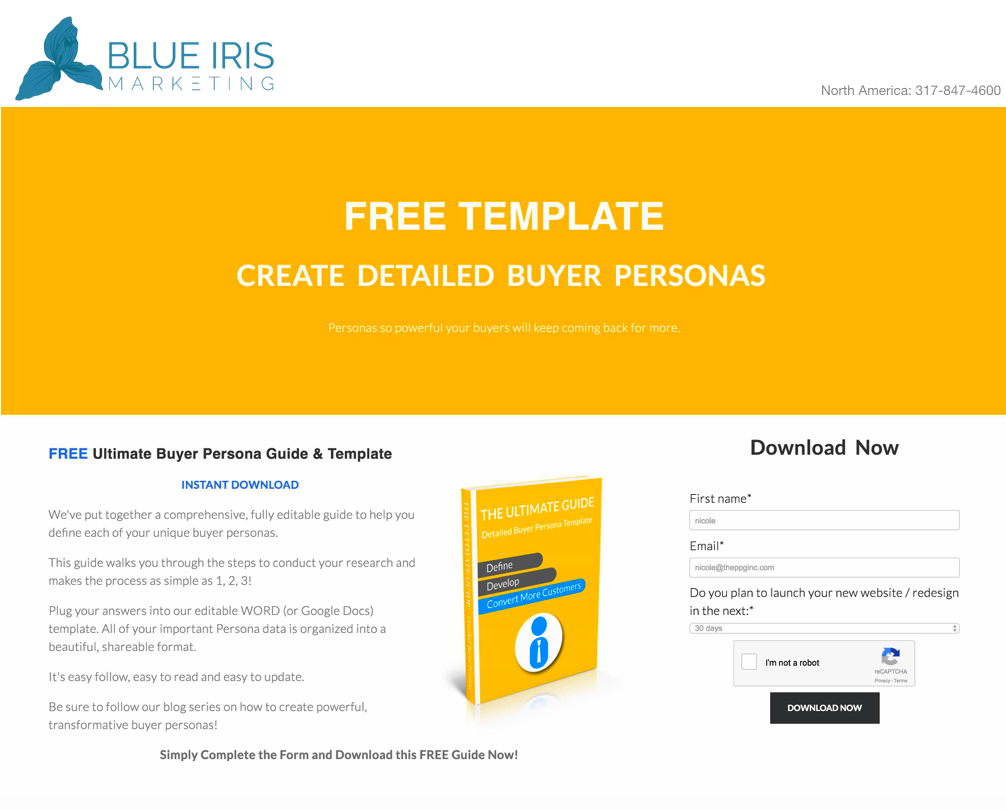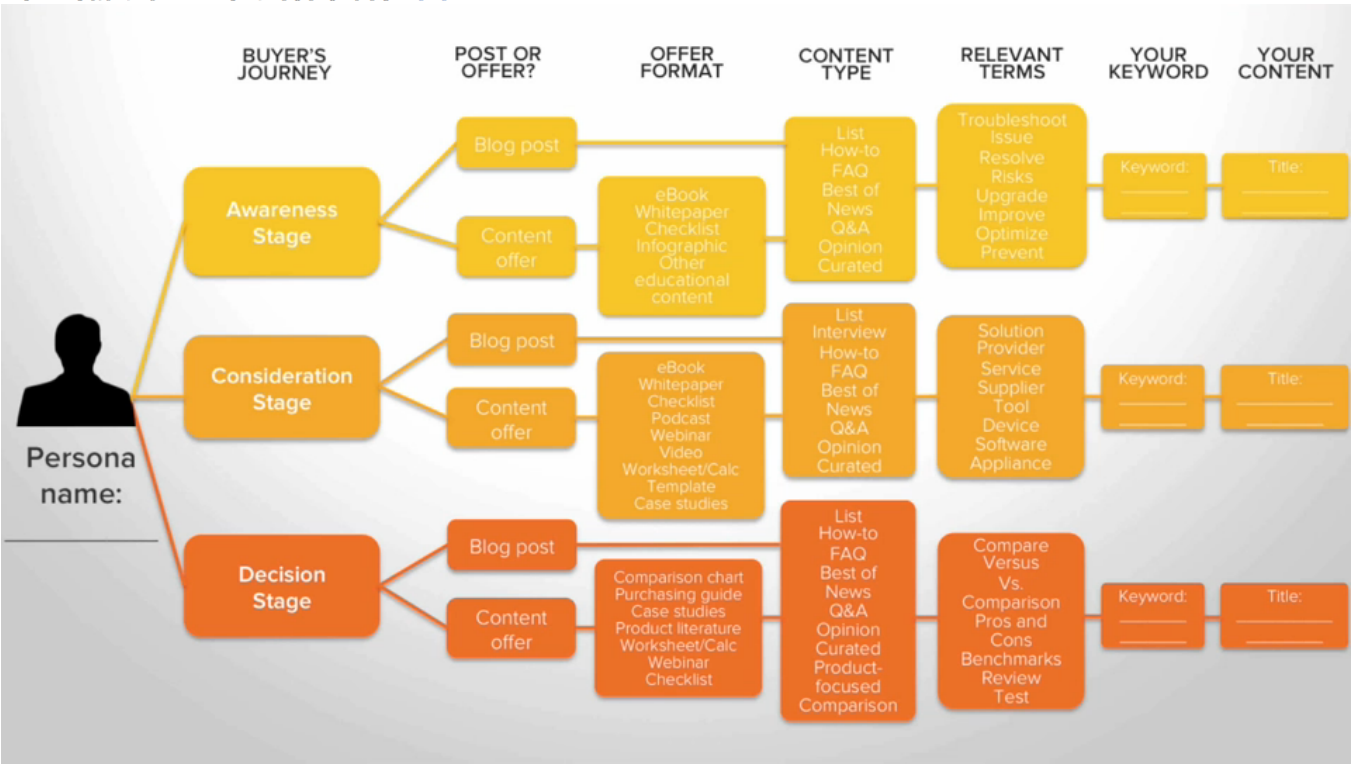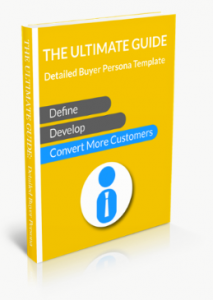What Parts of the Inbound Campaign Does the Buyer Persona Influence?
To achieve your marketing goals, you’ll need to produce an engaging, flawless user experience. In addition to having all elements of a highly ranking website, you’ll need a strategically mapped out inbound strategy that includes:
- Comprehensively developed Buyer Personas representing each buyer segment
- Completed Buyer’s Journey to guide your content development throughout each phase
- Content Strategy that drives the development of highly relevant, high-value content
- Content Calendar that directs the activities of the content development team, the resulting content and deadlines for posting content in every space. Here are some ideas:
- Offer development
- Landing pages
- CTA development
- Updated website and product pages
- Blog posts
- Social media
- Paid social and search engine promotions
- Forum, community and online engagement within the places your buyer persona frequents
- Guest blogging
- Highly-relevant, high-quality, well-optimized content that speaks to the needs of each buyer persona in each phase of the buyer’s journey
- Buyer-persona-driven website and landing page design and navigation
- Offers that are relevant to your buyer persona and that will help nurture them through the buyer’s journey
- Calls to action (CTA) that have been strategically developed to speak to your buyer persona using language they would use
- An excellent CRM to manage and segment your visitors, leads, subscribers, conversions and customers so that you can send personalized, time-relevant, buyer journey phase relevant messaging that nurtures your visitors, subscribers and leads through the marketing funnel
- A clearly outlined agreement between marketing and sales identifying the triggers for when a marketing lead becomes a sales lead and should be sent to the sales team
With this strategy in place, the marketing team and your website team can develop a marketing path that nurtures the buyer from the awareness stage, through the phase of consideration, and finally, to the decision-making phase.
Inbound Marketing Campaign – What You Should Measure
Use data to learn what works. Make modifications in real time; test, analyze, adjust again. Create a content calendar and treat your visitors with a steady stream of valuable assets. Add value to your visitors’ life and do it on a regular basis. As you perfect your buyer personas, content generation will become easier. Making inbound marketing a priority will help you build your campaigns quickly. Be sure to employ daily, weekly and monthly data analysis and scorecarding.
Analyzing Data. Monitoring Your KPIs. First you must identify the goals of your initiative and of each individual campaign you launch. Next, you must understand what you need to measure and understand what your Key Performance Indicators (KPIs) are. If you go to the trouble to develop, design and implement an inbound strategy, you must manage it by understanding the data it produces.
Let’s take a look at a typical campaign to help you get a clearer understanding of what your goals and KPIs might look like.
We’ve listed the goals and KPIs of this campaign and we will compare data to the period prior to launch of the initiative (week, month, quarter, year):
Goal #1 and KPI:
- Goal: Increase Website Traffic
- KPI: Measure number of website views
Goal #2 and KPI:
- Goal: Increase Brand Awareness
- KPI: Measure new followers, mentions, blog views, comments and reviews
Goal #3 and KPI:
- Goal: Increase Lead Generation
- KPI: Leads generated by sources from inbound initiatives
Goal #4 and KPI:
Goal #5 and KPI:
- Goal : Direct Sales
- KPI: Revenue driven directly or indirectly from inbound initiative
Metrics to Monitor. Some of the metrics you may monitor in this campaign are:
- Visitor-to-Contact Rate
- Contact-to-Customer Rate
- Visitor to Customer Rate
- Click through Rate
- Submission Rate
- Deliver, Open, Click Rate
- Connect, Engagement and Interaction Rate
- Keyword / Phrase Ranking
- Search Engine Page Results
Be sure your analytics tool is able to monitor these metrics. You’ll want to have weekly and monthly meetings with the appropriate staff to share the data and results and tweak your efforts for higher results in the next measuring period.
Getting Started with Your Buyer Persona Influenced Campaign
You should have enough information to get started creating your Buyer Persona! As you can see, understanding your buyer or customer persona is the most fundamental element of a successful marketing plan.
Starting with a tested template is important. So important, that we are sharing the template we use to develop our buyer personas. You’ll want to personalize the questions for your buyer, industry and solution so that you create perfect buyer personas that maximize your inbound marketing results!
If you need some support or prefer to get professional help developing your personas, give us a call or email us! We’re happy to talk with you and help you score some huge wins and new customers!









